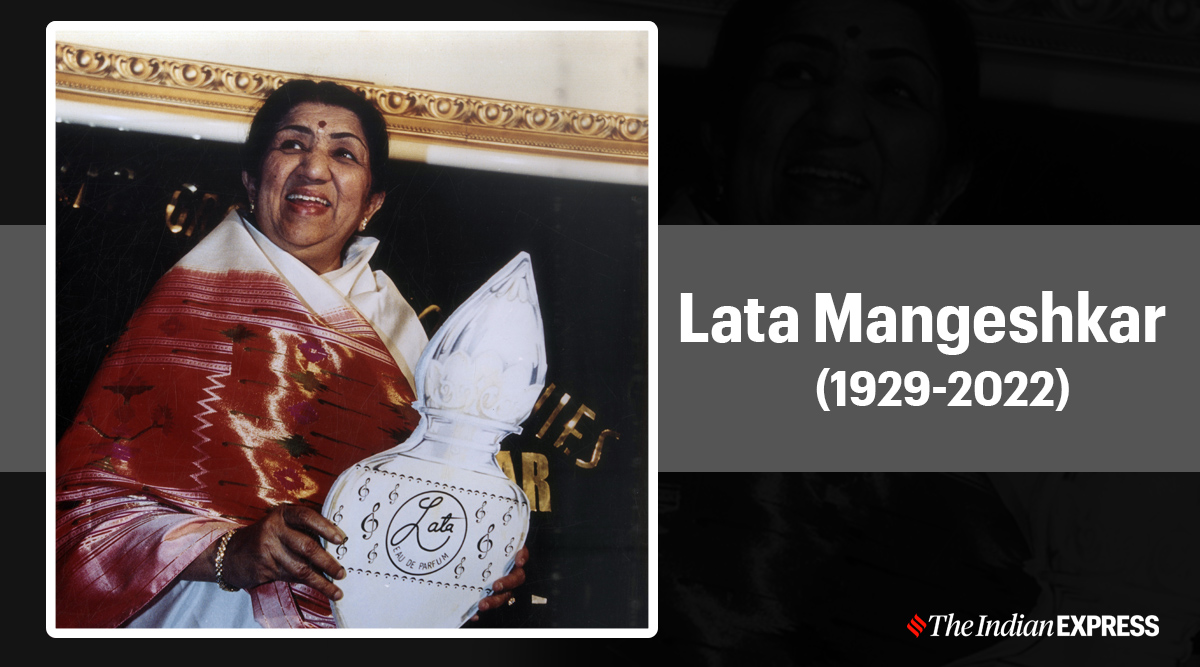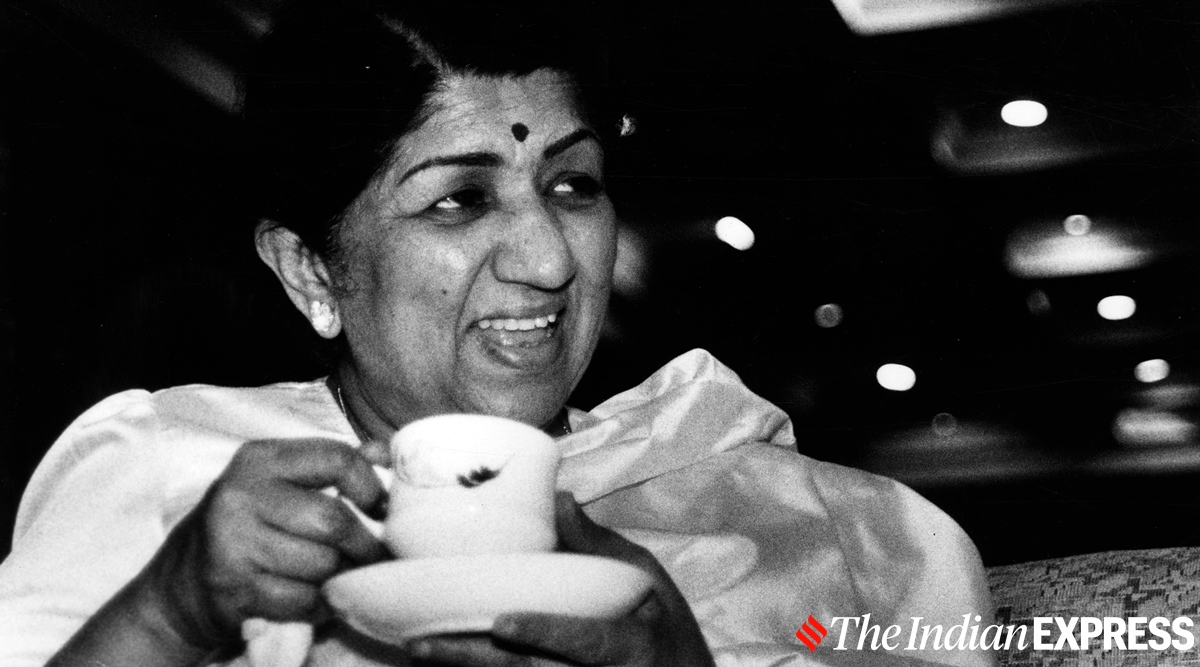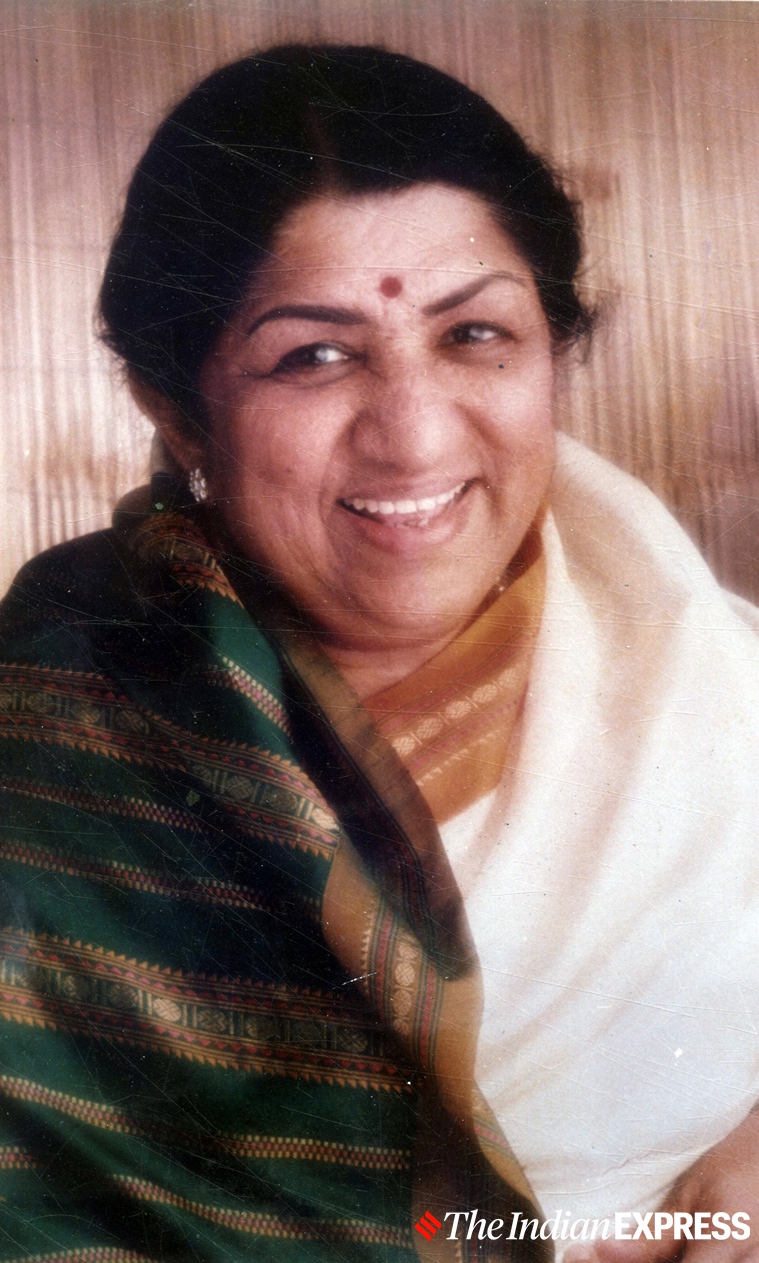 Lata Mangeshkar was 92.
Lata Mangeshkar was 92. India lost Lata Mangeshkar today. She was 92 and perhaps the most revered and well-known artist who inspired generations of artistes in the sub-continent for almost a century. She contracted Covid and was admitted to Mumbai’s Breach Candy Hospital last month after suffering from severe symptoms of pneumonia.
It would be ludicrous to say that Lata Mangeshkar was brilliant, amid other adjectives of commendation. Simply because she was Lata Mangeshkar. Just like Mozart, Bach or Beethoven, Lata Mangeshkar has been a moniker for excellence. And will continue to be so for decades to come. Technical prowess aside, her genius lay in her connection with the song, a connection that tied together her listeners too. Her version of the song was inevitably the best that it could be.
An artiste so surpassingly distinguished and impossibly prolific, Mangeshkar managed to do what many couldn’t. She accomplished a level of musical perfection that remains unmatched in Hindi film music. “Kambakhat galti se bhi besura nahi gaati,” Ustad Bade Ghulam Ali Khan had famously said with exasperation, and happiness rolled together.
But Lata Mangeshkar, besides giving us over 25000 songs – each a lesson in discipline, grit, and brilliance which sometimes only belonged to her despite the song being a team effort – also did something else. She made India and Pakistan unanimously agree over one thing – the excellence of her voice. Be it the famed story of a letter that came to All India Radio from Lahore, which said that India could have Kashmir if they could give Lata Mangeshkar to Pakistan or stories of her legions of fans on the other side of the border, some of them senior classical musicians, who spoke of her as the Partition’s biggest loss for Pakistan – there was a special bond between the two countries when it came to agreeing on the magic of Mangeshkar’s voice. Noorjehan, the iconic singer Mangeshkar admired and followed much before she made it as a successful singer, had once said of her – “People say that she admires me. Par Lata toh Lata hai. Meri nazar mein Lataji ki tarah koi aaj tak paida nahi huya”. High praise that – coming from Madam Noorjehan.
Mangeshkar was born in Indore in a Sikh neighbourhood and raised in Kolhapur in a musical family. Her father Master Dinanath Mangeshkar was a musician from Gwalior gharana who ran a drama company and Lata’s first guru. She went to school only for a day. She was about five and took a young Asha (Bhosle) along with her. But the school wouldn’t allow such a young child to sit in the class with her. She decided to never go back.
At home, she would listen to her father teaching his students and imbibe the pieces. One day her father spotted her correcting one of his students and was astounded at how deftly the child taught. He decided to teach her the ropes of classical music. But his untimely death led Lata, the eldest child of the family to begin work at 13.
 Lata Mangeshkar passes away. (Photo: Express archive)
Lata Mangeshkar passes away. (Photo: Express archive) It was Master Vinayak, her family’s close friend and owner of Navyug Chitrapat movie company who took care of the family and helped Lata become an actor and singer. Her’s first song was Vasant Joglekar’s Marathi film Kiti Hasaal, but it did not make the final cut. She sang a couple of songs for some Marathi films before moving to Mumbai in 1945. It’s here that she began training under the aegis of Ut Aman Ali Khan of the Bhendibazaar gharana. Vinayak also introduced Mangeshkar to composer Vasant Desai. He, too, passed away in 1948 after which it was composer Ghulam Haider who took Mangeshkar under his wing and introduced her to filmmaker Sasadhar Mukherjee who had just set up Filmistan studio. But Mangeshkar was rejected by Mukherjee who thought her voice was too thin. Angry that his judgment had been doubted, Haider went on to proclaim a prophecy – “music composers would beg Lata to sing for them”. Haider gave Mangeshkar her first significant break with the song ‘Dil mera toda, mujhe kahin ka na chhoda’ – a piece that sounds like an imitation of Noorjehan’s slightly nasal style. In some years, Mangeshkar was singing differently, in that thin yet mature voice that was to fulfill Haider’s words in the coming years.
Soon the nation cocked its ears to the gramophone playing Aayega aanewala, the haunting Khemchad Prakash composition from Mahal (1949) that took the nation’s breath away and sealed her supremacy in the Indian film industry for decades to come with no rival in sight. The song broke all records at Radio Ceylon as people flooded their office with letters to ask for the singer’s name (The gramophone company only carried the character’s name — Kamini). Every composer took notice. Lata Mangeshkar had arrived. There was also the irreverent Mughal-e-Azam (1960) ditty Pyar kiya toh darna kya or the profound Sahir Ludhianvi piece Allah tero naam ishwar tero naam (Hum Dono) or the playful Piya tose naina laage (Guide, 1965), everytime Mangeshkar sang, she captured a feeling so pure, that it left one with a sense of gratitude towards her. Especially when she sang Kavi Pradeep’s Aye mere watan ke logo to C Ramachandra’s tune and a nation’s collective consciousness with the Indo-Sino war as the backdrop. The country wept, so did Pt Nehru.
Some of her most successful outings were with composers Naushad, Anil Biswas, SD Burman, Shankar Jaikishen, C Ramachandra, Sali Chowdhury, Hemant Kumar, Roshan, Madan Mohan, Khayyam, Jaidev and Ravi among others.
 Lata Mangeshkar will be alive through her melodies. (Photo: Express archive)
Lata Mangeshkar will be alive through her melodies. (Photo: Express archive) As Mangeshkar climbed the ladder of success, one song at a time, stories about rivalries and her arrogance came to the fore. The most significant being with her sister and veteran singer Asha Bhosle. Music composer OP Nayyar infamously never asked Mangeshkar to sing for him. In a radio interview to Ameen Sayani in 1984, which is famously titled ‘Lata Se Darte Darte’, Mangeshkar had said that Asha ran away from home to marry Ganpatrao Bhosle at 14 and the family was unhappy. Also, Bhosle wouldn’t allow her to speak to the family. “Asha is my sister and we have very different styles. She gets her share of the songs and she her fair share. There is no question of rivalry… As for Nayyar sahab,” she’d said. Another was with Mohammad Rafi, with whom she had most of her legendary duets. This argument was over royalty issues. While Mangeshkar wanted royalty for her songs from the record company, Rafi believed that once the song had been sung and the singer paid for it, it wasn’t the singer’s property anymore. The two did not sing between 1963-1967.
Mangeshkar crooned for a gamut of actors – from Madhubala and Waheeda Rehman to Kajol and Madhuri Dixit. She sang through the 90s and some part of the 21st century and the songs such as Yaara seeli seeli (Lekin, 1990), Maaye ni maaye (Hum Aapke Hain Koun.!, ), Jiya jale (Dil Se, 1998), and Mere khwabo mein jo aaye (Dilwale Dulahaniya Le Jayenge, 1994) were a rage – a testament to the fact that one didn’t have to be of a certain age to sing for young heroines. Mangeshkar sang for just about everyone. Her popular last outings were Veer Zaara (2004), where composer Madan Mohan’s old tunes were resurrected and the poignant Lukka chhippi in Rang De Basanti (2006) Amid many awards, she was awarded the Dada Sahab Phalke Award in 1989 and Bharat Ratna, India’s highest civilian honour, in 2001.
With her death India has lost one of its most prolific and significant artistes – the last of her kind. India would not be the same without her voice that could dwarf the entire catalogues of the nation’s most legendary musicians. She leaves India, not just with her vast oeuvre but a sense of pride amid gentle shades of patriotism, the kind we felt when we saw her draped in the tricolour for the first time, crooning Mile sur mera tumhara. toh sur bane hamara…
- The Indian Express website has been rated GREEN for its credibility and trustworthiness by Newsguard, a global service that rates news sources for their journalistic standards.

